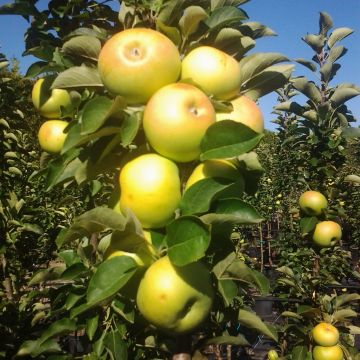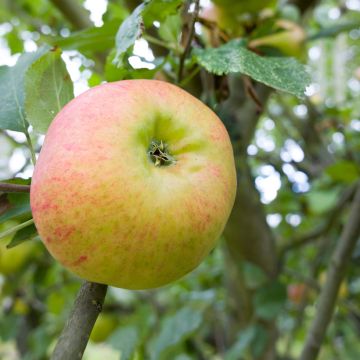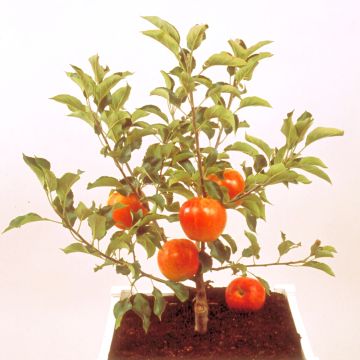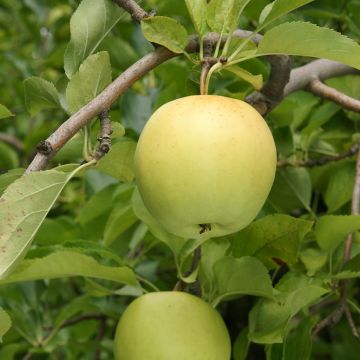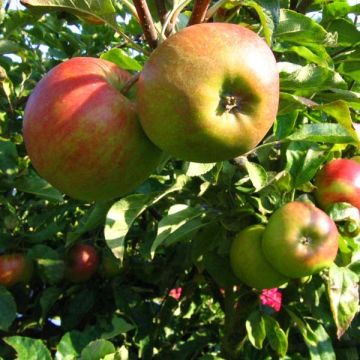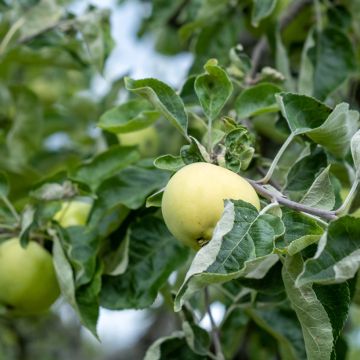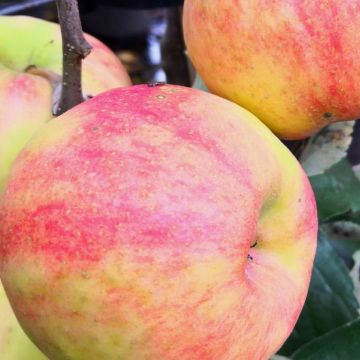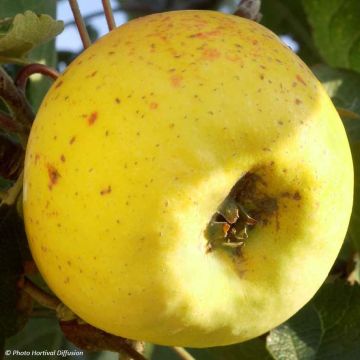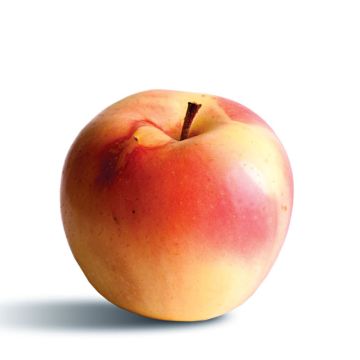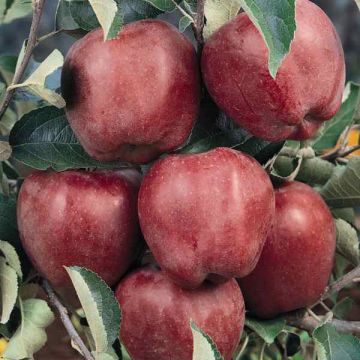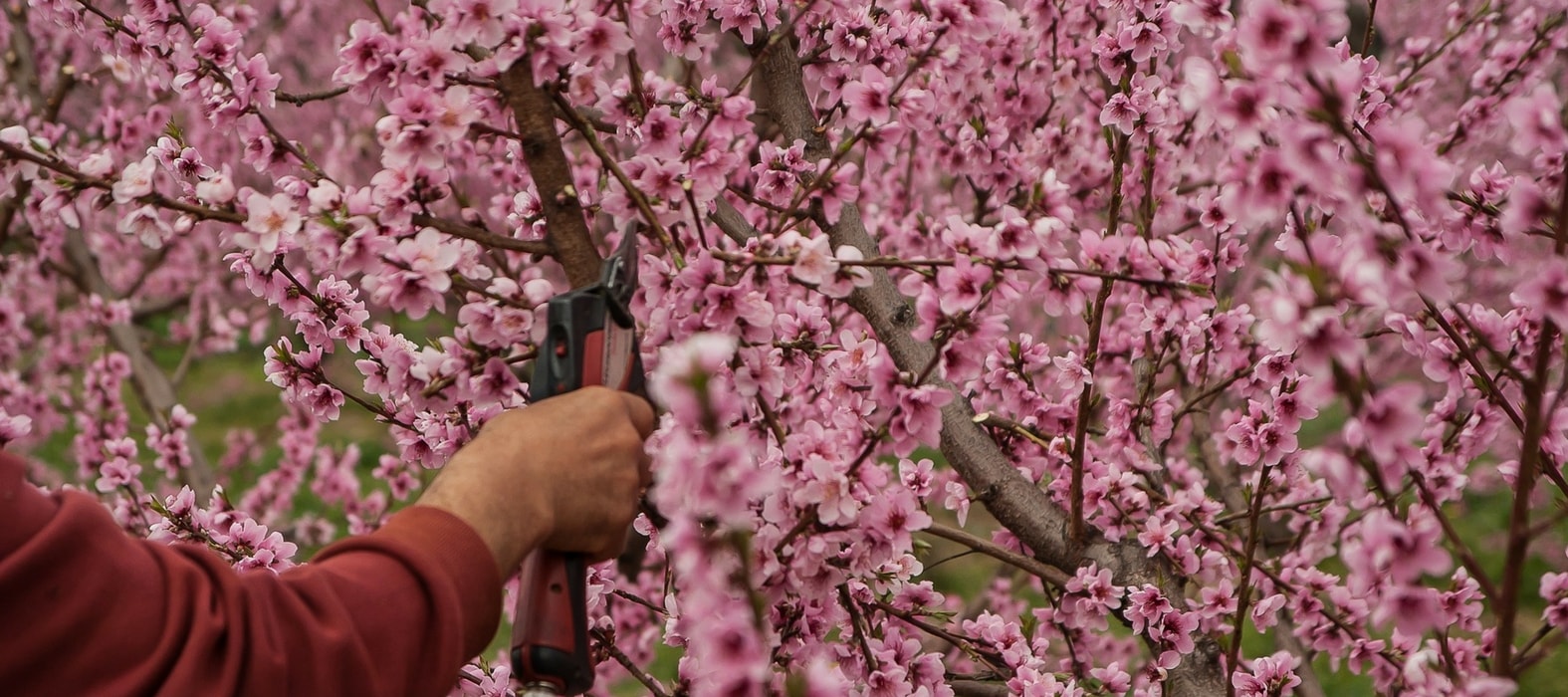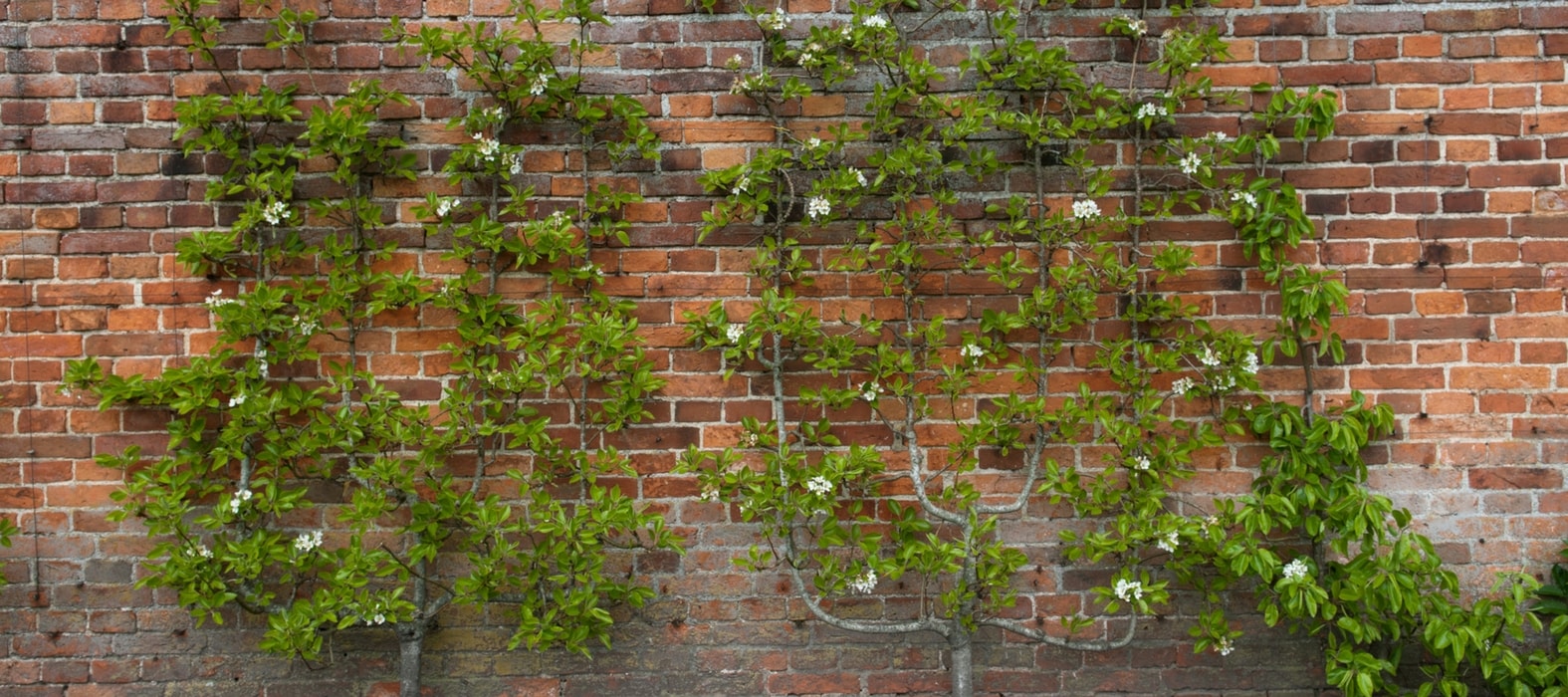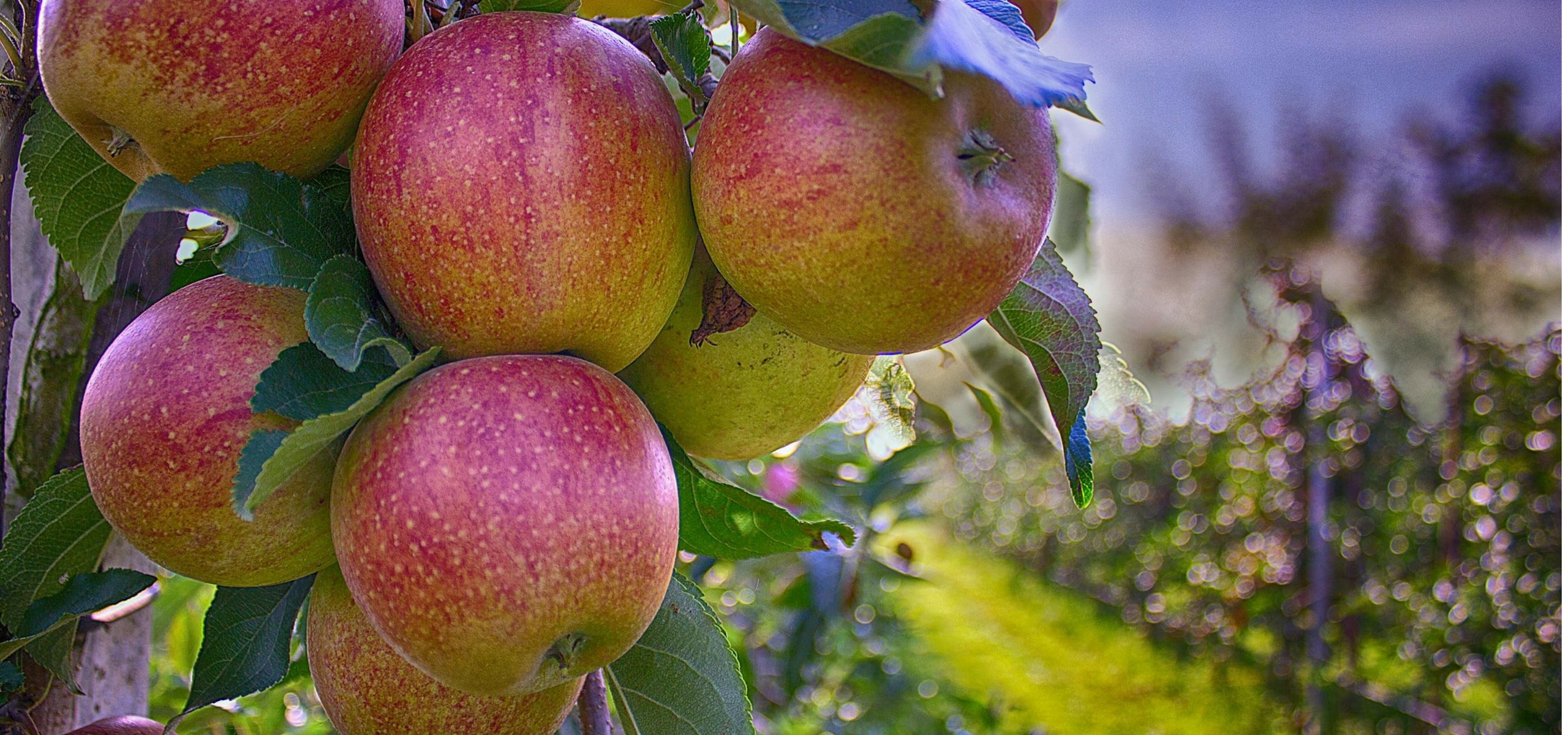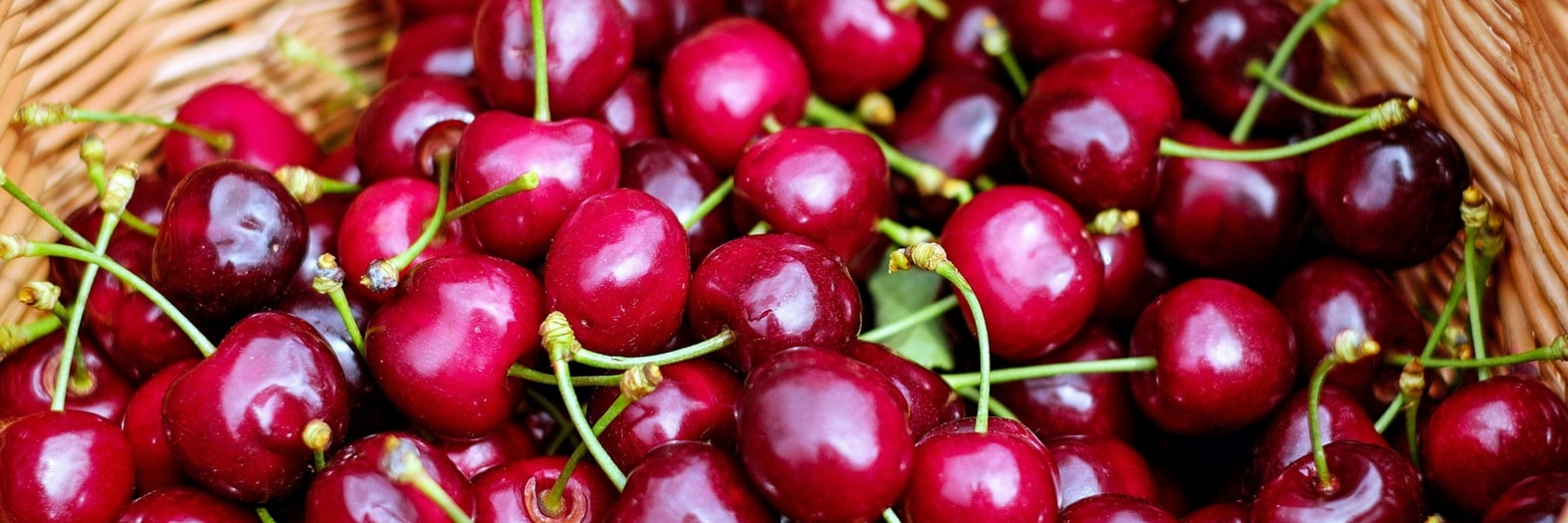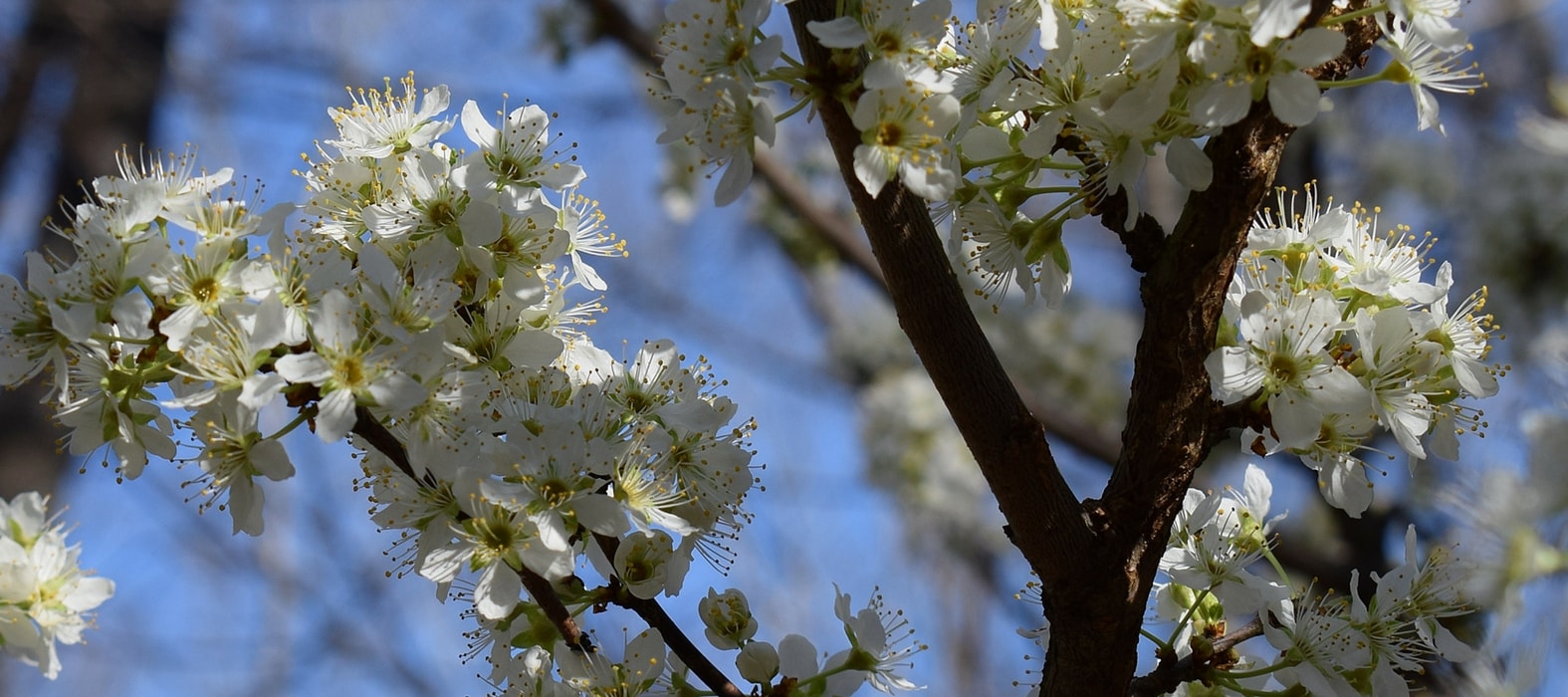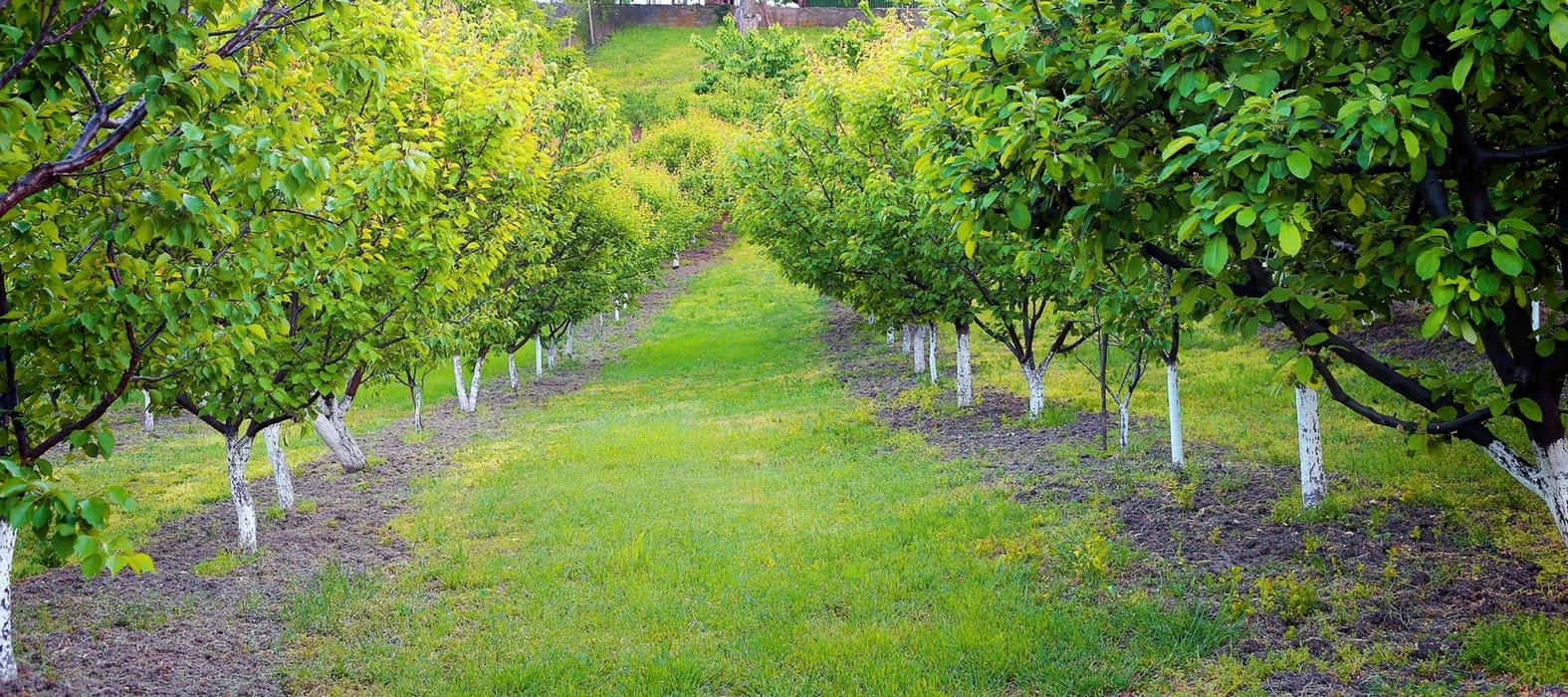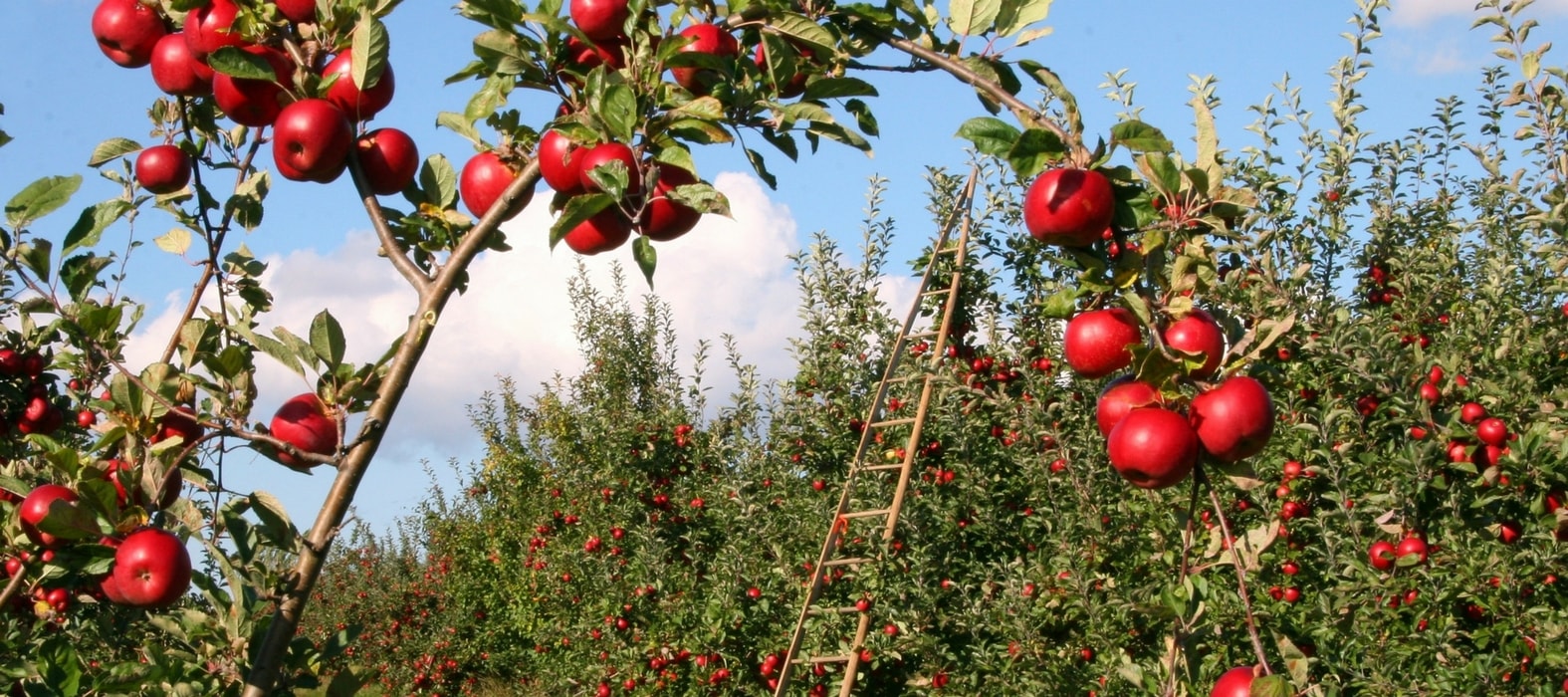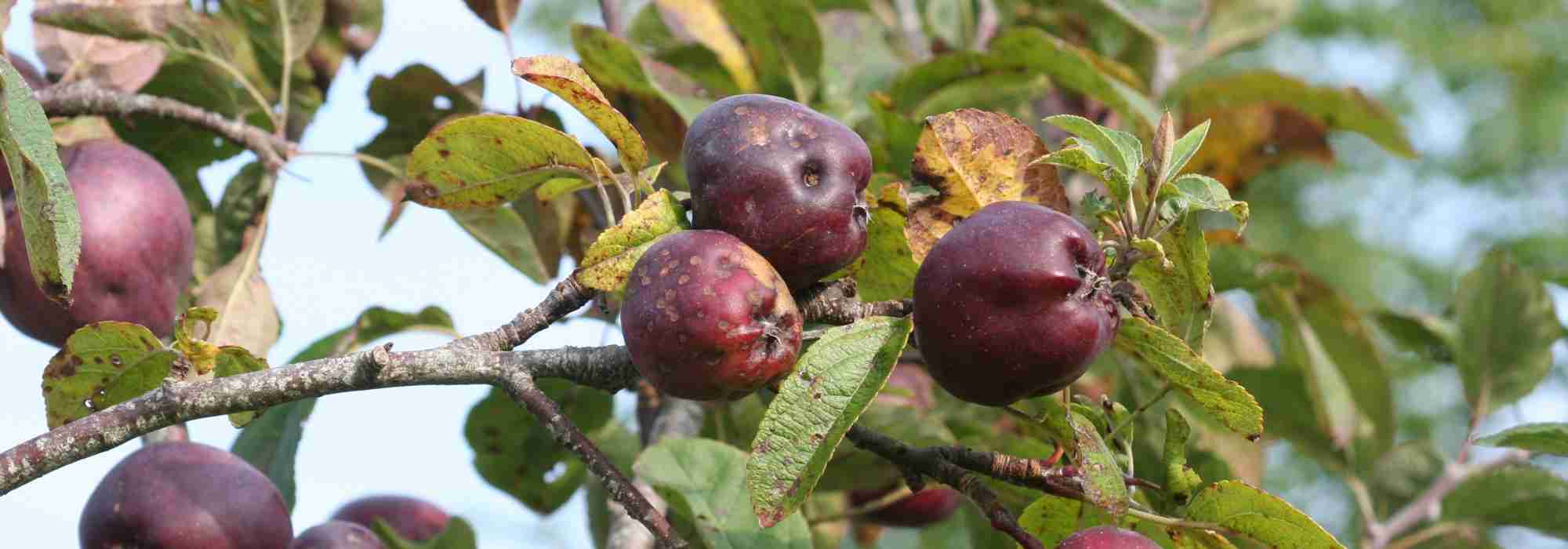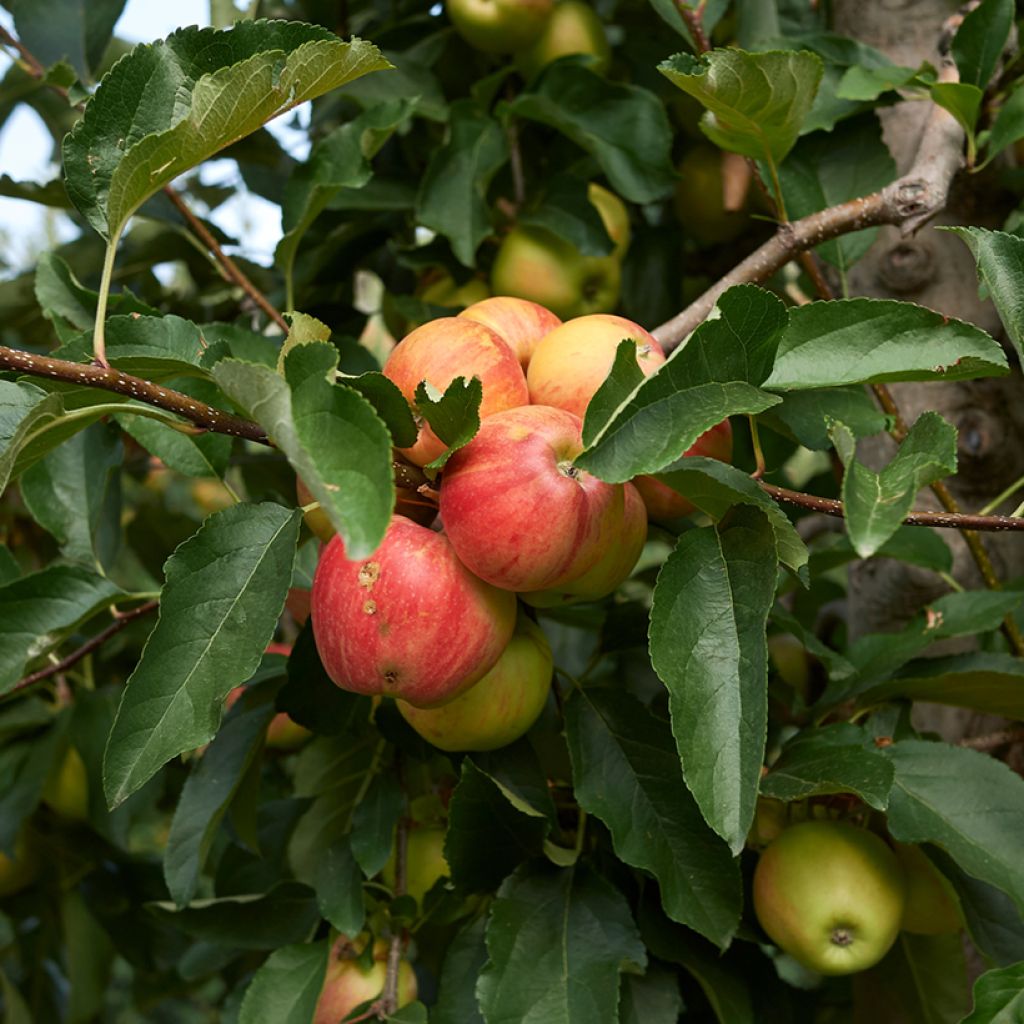

Apple Tree Cynamonówka Prążkowana - Malus domestica
Apple Tree Cynamonówka Prążkowana - Malus domestica
Malus domestica Cynamonówka Prążkowana
Apple
Special offer!
Receive a €20 voucher for any order over €90 (excluding delivery costs, credit notes, and plastic-free options)!
1- Add your favorite plants to your cart.
2- Once you have reached €90, confirm your order (you can even choose the delivery date!).
3- As soon as your order is shipped, you will receive an email containing your voucher code, valid for 3 months (90 days).
Your voucher is unique and can only be used once, for any order with a minimum value of €20, excluding delivery costs.
Can be combined with other current offers, non-divisible and non-refundable.
Home or relay delivery (depending on size and destination)
Schedule delivery date,
and select date in basket
This plant carries a 6 months recovery warranty
More information
We guarantee the quality of our plants for a full growing cycle, and will replace at our expense any plant that fails to recover under normal climatic and planting conditions.
Description
The 'Cynamonówka Prążkowana' Apple Tree is an old Russian variety, prized in Central Europe for its excellent hardiness. With a fairly vigorous growth, the tree develops a characteristic broad conical habit. It produces lovely apples where yellow and green blend before red dominates at ripeness. Their yellowish-white flesh is firm and sweet, with a surprising hint of cinnamon aroma. This eating apple is equally suited for desserts and preserves. Highly disease-resistant, particularly scab and powdery mildew, this variety requires pollination by another variety. The harvest is moderate to somewhat sparse but increases with age.
The Apple Tree is a member of the vast and important Rosaceae family, which also includes most of our other fruit-bearing genera (Pear, Peach and Nectarine, Raspberry...). The genus Malus comprises roughly forty species, including the common Apple Tree, Malus domestica (synonyms, Malus communis or Malus pumila), as well as non-fruiting species like ornamental Crabapple Trees. The fruiting Apple Tree has been cultivated since ancient times, predating the Roman era, with an estimated 20,000 varieties existing today.
The Malus domestica 'Cynamonówka Prążkowana' is a very old Russian variety, whose lineage has been lost. It was widely cultivated in the 18th and 19th centuries in central Russia, Armenia, Kazakhstan, and Ukraine. Similarly, in Poland, it is frequently found in old orchards of former monasteries, manor houses, and palaces. Its exceptional hardiness explains its popularity in these climatic zones, as does its strong disease resistance. The tree exhibits a vigorous growth, developing a broad, spreading conical to pyramidal habit. It typically reaches 4.5m in height with a spread of 3.5m or more. Its initially rapid growth slows once it starts to produce fuit, which occurs somewhat late, after 4 or even 5 years. In April-May, it produces a single, pale pink-white blossom, characteristic of the species, unscented but ornamental and melliferous. The flowers require pollination by other varieties to be planted nearby, such as 'Lobo', 'McIntosh', or 'Kronselska'.
The resulting fruit is small to medium in size, spherical and slightly flat. Its initially greenish-yellow skin increasingly turns red as the fruit ripens. Full ripeness occurs around late August, depending on the climate, and the apple can be eaten straight from the tree. The lightly ribbed fruit is covered in a fairly thick natural wax. Its flesh is firm, dense, yellowish-white, both sweet and tangy, with a notable spiced aroma, primarily cinnamon. Relatively juicy, this dessert apple also makes delicious fruit juice and can be used in desserts and preserves.
Easy to grow and very hardy, unfazed by cold, scab, or powdery mildew, this variety's only drawback is perhaps its rather low yield, though this improves as the tree ages. Its attractive apples offers delightful flavours to discover. Plant it alongside other fruit trees with staggered harvests to enjoy throughout summer and autumn. Berries will kick things off, such as the multiple cropping Raspberry Frambélise, with incomparably sweet berries, or the more tangy Redcurrant Bushes. For the autumn, opt for the vitamin-rich, uniquely flavoured Kiwi, or the equally decorative and succulent Persimmon.
Plant habit
Fruit
Flowering
Foliage
Botanical data
Malus
domestica
Cynamonówka Prążkowana
Rosaceae
Apple
Malus domestica 'Cinnamon Tree Ribbed'
Cultivar or hybrid
Other Apple trees
View all →Planting and care
Choose a sunny spot for your Cynamonówka Prążkowana Apple Tree. The soil can be slightly chalky or acidic, but not excessively so. Dig a wide planting hole at least three times the volume of the root ball. Add organic matter (compost, well-rotted manure...) and a base fertiliser like ground horn at the same time. Do not bury the graft collar. Stake if necessary. For apple trees planted in exposed or windy locations, it may be advisabl to stake them using a guy-wire system: plant three stakes in a triangle 50 cm around the trunk, join them with pieces of wood. Protect the bark with a sheet of rubber or similar wrapped around the trunk, and secure the stakes to the trunk with metal wires. Water generously, even in winter, even if it rains. Fruit trees are ideally planted between October and March, avoiding frost periods. Container-grown plants can be planted all year round except during extreme heat or frosts.
In winter, you can add and lightly work into the soil surface a small spadeful of wood ash rich in potash around the base of the tree to improve fruiting. Apple trees can be susceptible to various diseases and pests. To minimise this risk, space trees sufficiently, plant mixed-species hedges, and fit nest boxes or insect shelters to attract beneficial wildlife. In short: prioritise diversity. The main diseases affecting apple trees are scab (brown spots on leaves), blossom wilt (withering of flowers and fruit rot on the tree), and powdery mildew (white felting on leaves). For these three cases, preventive action is preferable by spraying a horsetail decoction; as a last resort and during severe attacks, a curative treatment with a Bordeaux mixture can be applied. Fortunately, this variety is less susceptible to scab and powdery mildew, so you’ll have little to treat. As for pests, the codling moth (or fruit worm) is a small caterpillar, hatched from a moth’s eggs, which burrows into the fruit. To combat this, it’s best to act preventively by encouraging blue tits and bats with nest boxes. In case of aphid infestation, spray a solution of tar soap.
Planting period
Intended location
Care
Planting & care advice
This item has not been reviewed yet - be the first to leave a review about it.
Haven't found what you were looking for?
Hardiness is the lowest winter temperature a plant can endure without suffering serious damage or even dying. However, hardiness is affected by location (a sheltered area, such as a patio), protection (winter cover) and soil type (hardiness is improved by well-drained soil).

Photo Sharing Terms & Conditions
In order to encourage gardeners to interact and share their experiences, Promesse de fleurs offers various media enabling content to be uploaded onto its Site - in particular via the ‘Photo sharing’ module.
The User agrees to refrain from:
- Posting any content that is illegal, prejudicial, insulting, racist, inciteful to hatred, revisionist, contrary to public decency, that infringes on privacy or on the privacy rights of third parties, in particular the publicity rights of persons and goods, intellectual property rights, or the right to privacy.
- Submitting content on behalf of a third party;
- Impersonate the identity of a third party and/or publish any personal information about a third party;
In general, the User undertakes to refrain from any unethical behaviour.
All Content (in particular text, comments, files, images, photos, videos, creative works, etc.), which may be subject to property or intellectual property rights, image or other private rights, shall remain the property of the User, subject to the limited rights granted by the terms of the licence granted by Promesse de fleurs as stated below. Users are at liberty to publish or not to publish such Content on the Site, notably via the ‘Photo Sharing’ facility, and accept that this Content shall be made public and freely accessible, notably on the Internet.
Users further acknowledge, undertake to have ,and guarantee that they hold all necessary rights and permissions to publish such material on the Site, in particular with regard to the legislation in force pertaining to any privacy, property, intellectual property, image, or contractual rights, or rights of any other nature. By publishing such Content on the Site, Users acknowledge accepting full liability as publishers of the Content within the meaning of the law, and grant Promesse de fleurs, free of charge, an inclusive, worldwide licence for the said Content for the entire duration of its publication, including all reproduction, representation, up/downloading, displaying, performing, transmission, and storage rights.
Users also grant permission for their name to be linked to the Content and accept that this link may not always be made available.
By engaging in posting material, Users consent to their Content becoming automatically accessible on the Internet, in particular on other sites and/or blogs and/or web pages of the Promesse de fleurs site, including in particular social pages and the Promesse de fleurs catalogue.
Users may secure the removal of entrusted content free of charge by issuing a simple request via our contact form.
The flowering period indicated on our website applies to countries and regions located in USDA zone 8 (France, the United Kingdom, Ireland, the Netherlands, etc.)
It will vary according to where you live:
- In zones 9 to 10 (Italy, Spain, Greece, etc.), flowering will occur about 2 to 4 weeks earlier.
- In zones 6 to 7 (Germany, Poland, Slovenia, and lower mountainous regions), flowering will be delayed by 2 to 3 weeks.
- In zone 5 (Central Europe, Scandinavia), blooming will be delayed by 3 to 5 weeks.
In temperate climates, pruning of spring-flowering shrubs (forsythia, spireas, etc.) should be done just after flowering.
Pruning of summer-flowering shrubs (Indian Lilac, Perovskia, etc.) can be done in winter or spring.
In cold regions as well as with frost-sensitive plants, avoid pruning too early when severe frosts may still occur.
The planting period indicated on our website applies to countries and regions located in USDA zone 8 (France, United Kingdom, Ireland, Netherlands).
It will vary according to where you live:
- In Mediterranean zones (Marseille, Madrid, Milan, etc.), autumn and winter are the best planting periods.
- In continental zones (Strasbourg, Munich, Vienna, etc.), delay planting by 2 to 3 weeks in spring and bring it forward by 2 to 4 weeks in autumn.
- In mountainous regions (the Alps, Pyrenees, Carpathians, etc.), it is best to plant in late spring (May-June) or late summer (August-September).
The harvesting period indicated on our website applies to countries and regions in USDA zone 8 (France, England, Ireland, the Netherlands).
In colder areas (Scandinavia, Poland, Austria...) fruit and vegetable harvests are likely to be delayed by 3-4 weeks.
In warmer areas (Italy, Spain, Greece, etc.), harvesting will probably take place earlier, depending on weather conditions.
The sowing periods indicated on our website apply to countries and regions within USDA Zone 8 (France, UK, Ireland, Netherlands).
In colder areas (Scandinavia, Poland, Austria...), delay any outdoor sowing by 3-4 weeks, or sow under glass.
In warmer climes (Italy, Spain, Greece, etc.), bring outdoor sowing forward by a few weeks.































